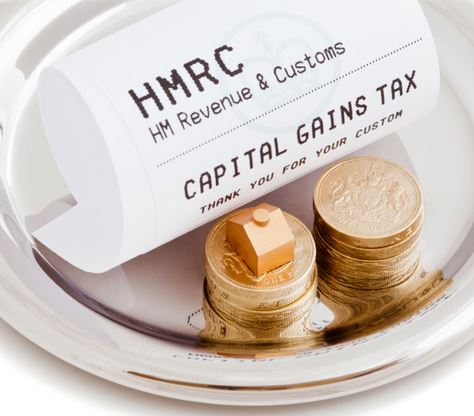[rev_slider alias=”slider-1-11″][/rev_slider]
Research & Development Tax Relief, also known as Tax Credits is an incentive-based initiative spearheaded by the Government. R&D Tax Relief scheme supports corporate who invest in innovation and are made available for all businesses that want to channel development through research and innovation. This incentive-based program focuses on progression under the leadership of science and technology. Companies are rewarded based on their proactive participation and the incentives derived can from Tax Reliefs acts as a valuable financial cushion for companies to grow and thrive in.
R&D Tax Relief has been in operation for almost 18 years now with the associated companies claiming up to £2bn per annum under this scheme. Companies now can not only multiply their savings on tax bills but can also claim cash credit as a part of their R&D expenditure, provided transparent records are maintained. However, multiple companies are still unaware of the entire scope of this financial aid scheme by the Government, which is one of the primary reasons why these companies are missing out on the opportunity to grow, both operation-wise and financially.
This guide can give you a comprehensive overview of the scheme and how businesses can use this scheme to propagate their business expertise and financial aid.
How does R&D Tax Relief Work?
Even though this financial scheme aims to help companies prosper by valuing their contribution towards scientific and technological innovations, there are a few critical regulations that this scheme follows. Most companies (even the ones who are not aware of it) eligible for R&D Tax Reliefs, regardless of the success of the innovation research. However, in order to claim tax benefits for your R&D project, the company needs to-
- Conduct their research and development based on a thorough and systematic strategy
- Partake in innovative projects with an aim that they need to achieve advancement in the field of science and technology
- Take into account the technological or scientific uncertainties that come with R&D projects
- Ensure the R&D initiative is in accordance to the company’s existing or present nature of trade. Companies can participate in R&D for a start-up but clear records should mention the company intends to make the R&D valuable to the future trade prospects
R&D projects that want to claim benefits from this initiative needs to also mention-
- How the current R&D will help in the advancement of science and technology in relation to the current, existing, or future trade intent
- How the current R&D project intends to overcome scientific or technological uncertainty
- If the R&D project faces obstacles leading to uncertainty, the obstacle nature along with the means of trail to overcome the obstacle needs to be clearly stated
In a nutshell, demonstrating that your company took a risk for the greater good of scientific and technological invention, backed by transparent records documenting the investment sectors is what R&D Tax Relief relies on.
Possible Grounds for Claim
R&D investment costs can be claimed right from the date of project initiation to the date of discovery or project conclusion. However, claims pertaining to production and distribution of goods and services, land costs, capital investment, rent, patent or trademark costs are not included in the R&D Tax Relief. However, you can claim benefits for the following-
- Labour Costs-
Employee participation needs to be justified by salaries, overtimes, wages, NICs, Pension fund contributions etc. can be taken into account for R&D Tax Relief. Admin, HR, and support staff costs relating to the research project can also be claimed.
- Sub-Contractor Costs-
You can claim up to 65% of the relevant costs incurred in the nature of payments made to external agencies and subcontractors, provided they have proactively contributed in the research program.
- Technological Costs-
Any investment on technology to accelerate or facilitate the research and development process can be claimed under this scheme. This includes software licenses, machinery or equipment hires.
- Clinical Trail Costs-
Based on the nature of your research, you may need volunteers for clinical trails which can be taken into account when claiming benefits for your R&D. For instance, if you’re research involves pharmaceutical aid, claim benefits for payments made to volunteers can be taken into account.
- Consumable Costs-
Consumable items in the form of utilities or materials used in the research project can be claimed too, but the claims will levy the proportion of usage within the project.
Types of R&D Relief- Here’s What You Need To Know
SME Relief
To qualify as an SME for R&D Tax Relief, the enterprises should have less than 500 staff employed under it along with a turnover that cannot exceed €100m or a balance sheet that totals under €86m. Do keep in mind, external investors or partnered enterprises can impact the SME’s claim in accordance to the HMRC guidelines. If your small or medium-sized enterprise is getting steady aid from the state, investors, sub-contractors, or other partner enterprises, your chances of claiming R&D tax relief on SME grounds will be compromised. However, based on certain conditions or regulations, you may still be eligible to claim R&D Expenditure Credit (RDEC)
Research & Development Expenditure Credit
This R&D tax relief type is more applicable for large corporations working on R&D projects. However, this can also be claimed by SMEs if they are opting for financial aid from external sources.
How much can you claim?
If you’re following the SME scheme, your R&D tax relief claim can go as high as 230% while the RDEC claim will be 12% of your qualifying R&D expenditure.
Claiming R&D relief
The R&D claiming process
- Start by doing a complete assessment of your R&D activity
- Round up the total R&D expenditure eligible under R&D Tax Relief
- Submit the final calculation in your CT600 tax return
The Government allows companies to claim R&D relief up to 2 years from the end of accounting period it relates to by entering project related expenditure in company tax return form which can either be submitted online using HMRC service or can be posted manually to HMRC R &D Department along with Project Report showing basis of claim.
HMRC (Her Majesty’s Revenue and Customs) demand a lot of thorough record-keeping of all eligible activities, expenditures, and efforts in case of uncertainties. Taking everything into account and filing the right returns can be a bit challenging without professional guidance from accounting experts.
If you’re on the brink of your tax submission, The Goodhams team can proactively help consult, support, and guide you through the complex R&D tax relief claim process. You can connect with any of our expert advisors for further queries or support.
Minimize Your Tax And Bill Today

Business Tax
We offer a range of services to small, medium and large businesses to help you minimise your corporate
Read More
International Tax
Businesses and individuals are now taking their businesses overseas with international partnerships
Read More
Capital Gains Tax
Capital Gains Tax or CGT is defined as the tax levied on a profit that an individual makes when they
Read More
Inheritance Tax Advice
Inheritance trusts are a perfect way to keep your assets protected and cared for, a even when you pass
Read More
R&D Tax Relief old
Research & Development Tax Relief (R&D), also known as Tax Credits is an incentive-based initiative
Read More
Property Tax Accountants
From buy-to-let landlords to large property groups, our specialist property accountants and property
Read More